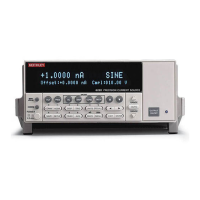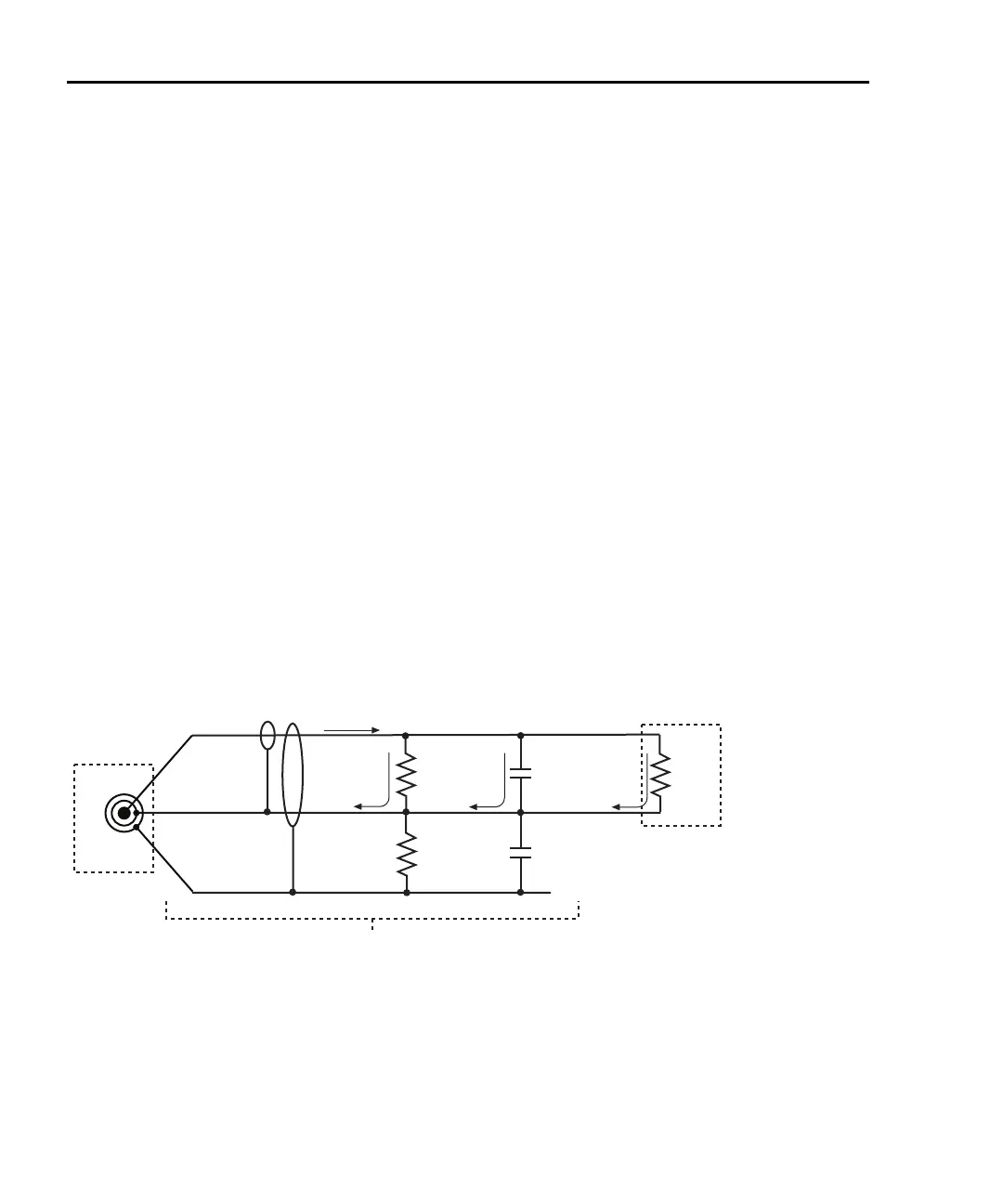2-10 Output Connections Model 6220/6221 Reference Manual
Return to Section 2 topics
Leakage current – After capacitor C
L1
charges, it is effectively removed from the
test circuit (assuming the source level remains constant). What is left is the
100GΩ insulator resistance (R
L1
) in parallel with the 1GΩ DUT (R
DUT
), effectively
making a current divider. As a result, 99nA is sourced to the DUT (1% error). The
higher the impedance of the DUT, the higher the source error.
Guarded triax cable example – inner shield connected to Cable Guard
For high impedance DUT, guarding the triax cable greatly reduces leakage current
and the effects of cable capacitance.
The example in Figure 2-7 illustrates the principle of triax cable guarding. Output
high and guard are at nearly the same potential (in this case 100V). This potential
is applied to both sides of resistor R
L1
and capacitor C
L1
. This makes the voltage
drop across the capacitor 0V. Therefore, the capacitor does not charge and is
effectively removed from the test circuit. The response at the DUT is much faster
and is determined by the output response settings of the Model 622x (see “Output
response,” on page 3-5 for details).
The voltage drop across resistor R
L1
is also 0V. Therefore, no current flows
through the resistor R
L1
. With resistor R
L1
effectively removed from the test circuit,
virtually all the current (100nA) flows through the DUT. Notice that a leakage
current will flow from guard to output low (via resistor R
L2
and capacitor C
L2
), but it
will not affect the current sourced to the DUT.
Figure 2-6
Unguarded triax cable – inner shield connected to Output Low (see Figure 2-4)
100GW
High
Low
Earth
RL1
100GW
R
L2
100nA
1GW
R
DUT
1nA
99nA
100pF
CL1
100pF
C
L1
t = RCL1
= 0.99GW x 100pF
= 99ms
5
t = 495ms
I
CHG
Output
(10nA)
622x
DUT
Triax Cable
R = R
L1 || RDUT
= 100GW || 1GW
= 0.99GW
Ground
Test Equipment Depot - 800.517.8431 - 99 Washington Street Melrose, MA 02176 - TestEquipmentDepot.com

